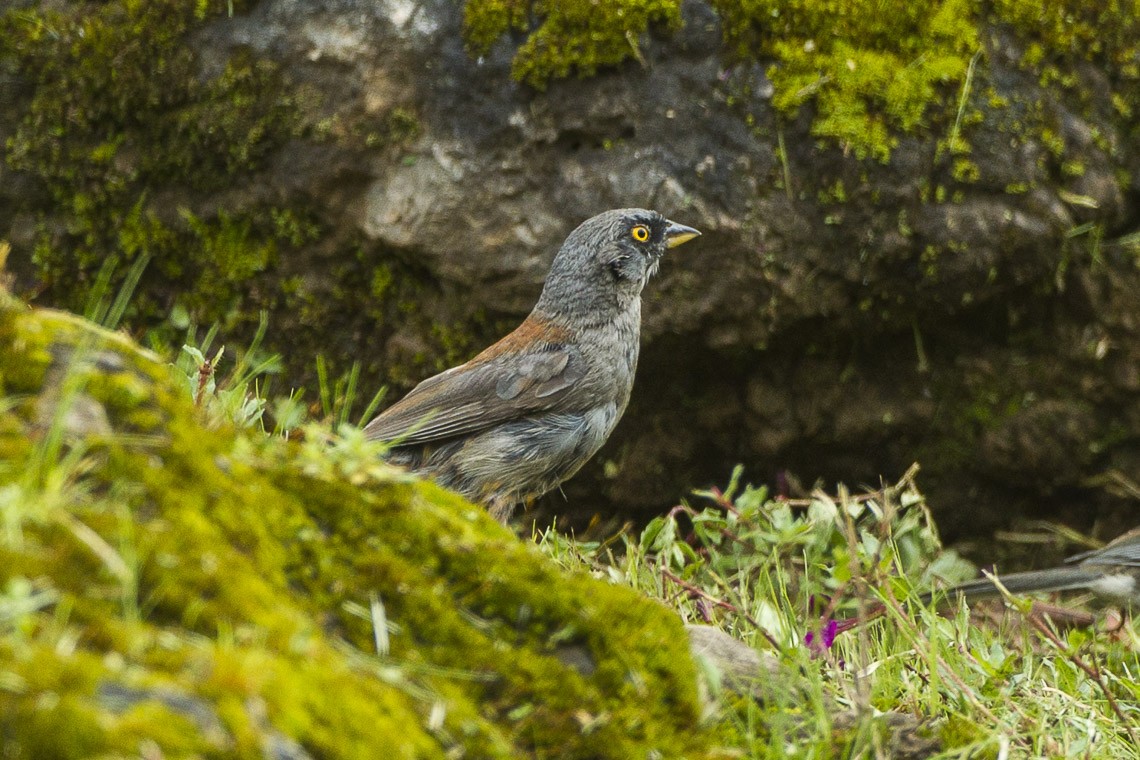Yellow-eyed Junco
A species of Juncos, Also known as Caster-of-fire Scientific name : Junco phaeonotus Genus : Juncos
Yellow-eyed Junco, A species of Juncos
Also known as:
Caster-of-fire
Botanical name: Junco phaeonotus
Genus: Juncos
Content
Description General Info
 Photo By Francesco Veronesi , used under CC-BY-SA-2.0 /Cropped and compressed from original
Photo By Francesco Veronesi , used under CC-BY-SA-2.0 /Cropped and compressed from original Description
The yellow-eyed junco (Junco phaeonotus) is a species of junco, a group of small New World sparrows. Its range is primarily in Mexico, extending into some of the mountains of the southern tips of the U.S. states of Arizona and New Mexico. It is not generally migratory, but sometimes moves to nearby lower elevations during winter. The female lays three to five pale gray or bluish-white eggs in an open nest of dried grass two to three times a year. Incubation takes 15 days, and when hatched, the chicks are ready to leave the nest two weeks later. This bird's diet consists mainly of seeds, berries and insects. 
Size
16 cm (6.25 in)
Life Expectancy
6.6-7 years
Nest Placement
Ground
Clutch Size
1 - 5 eggs
Incubation Period
1 - 3 broods
Number of Broods
12 - 15 days
Nestling Period
10 - 13 days
Feeding Habits
Yellow-eyed Junco predominantly consume seeds and insects, adapting their diet seasonally. They forage on the ground—scratching or hopping to find food—and in foliage, where they hunt for insects and spiders. They exhibit aerial sallies for flying prey and drink sap from tree holes.
Habitat
Yellow-eyed Junco typically reside in high-altitude environments, ranging from 3,900 to 11,500 feet. They are predominantly found in mountainous conifer forests, including ponderosa pine, pine-oak, and diverse coniferous woodlands. Yellow-eyed Junco show a preference for cool and wet climate conditions that these forests provide. During winter months in the United States, yellow-eyed Junco migrate to lower elevations, where they can be found in oak woodlands, scrubland, pastures, and fields.
Nest Behavior
Yellow-eyed Junco females create a hollow for their nest using their bills and feet and engage in the collection and weaving of materials.
Nest Characteristics
Yellow-eyed Junco's nests are built on the ground, often on slopes in shaded areas. They are commonly placed at the base of a grass clump or hidden by rocks or logs. These nests are bulky and cup-shaped, constructed from grasses, pine needles, moss, and lined with finer grasses and hair.
Dite type
Granivorous
General Info
Feeding Habits
Bird food type
Bird Feeder Type

Platform
Sounds
Call
Recording location: Mexico
Song
Recording location: Mexico
Behavior
Yellow-eyed Junco exhibit a gregarious nature, especially in winter when they descend to lower elevations and form flocks of up to 40 birds. While they maintain a more sedentary lifestyle in their range, these juncos engage with like species such as Dark-eyed Juncos and Spotted Towhees during this period. Daily activities can include occasional spats marked by vocalizations, posturing, and chasing. As breeding season approaches in late February, yellow-eyed Junco males grow more territorial, signaling readiness to mate through increased singing, elaborate displays, and strutting to court females. Remarkably, pairs often exhibit fidelity to previous mates and return to habitual breeding sites, underscoring their distinct behavior among avian species.
Species Status
Not globally threatened.
Scientific Classification
Phylum
Chordates Class
Birds Order
Perching birds Family
New world sparrows Genus
Juncos Species
Yellow-eyed Junco